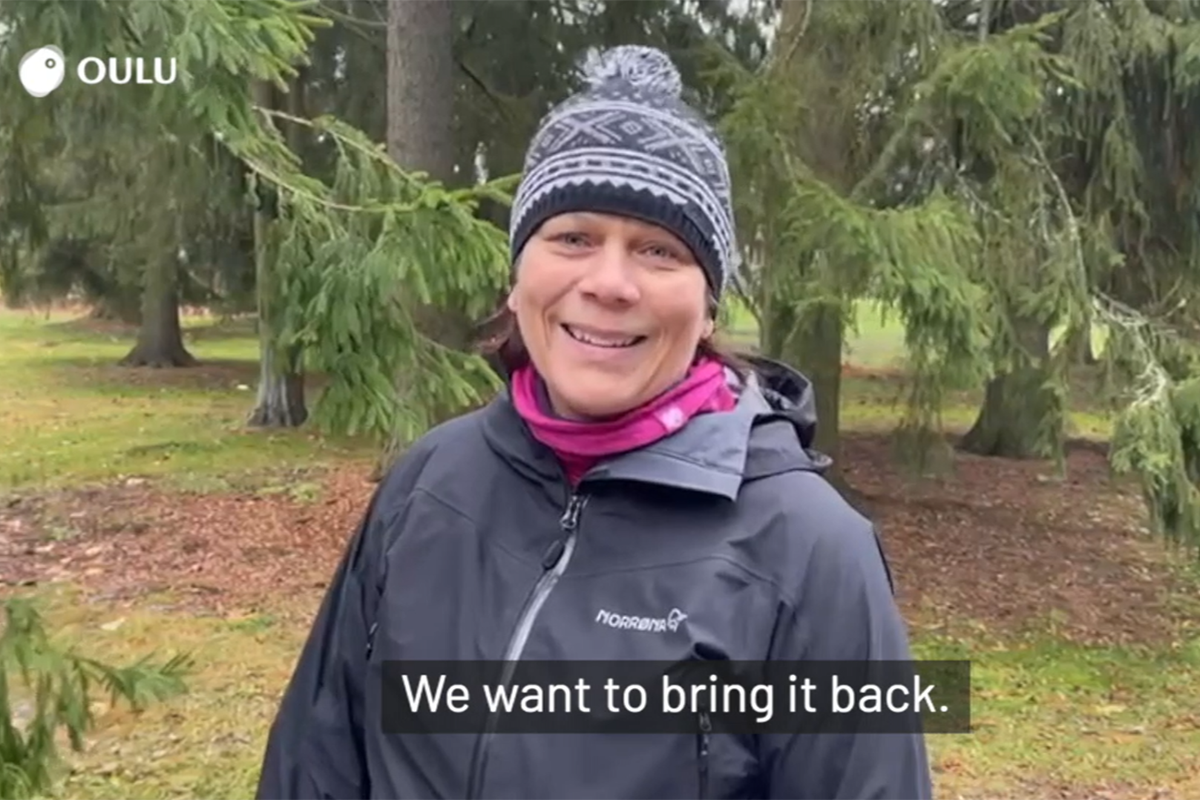My Oulu: How the brown trout returned to Hupisaaret – watch the video

In Hupisaaret you’re always surrounded by water. The soothing noise of fast-running streams provides a perfect environment to people seeking a break from fast-paced city life.
It’s a wonderful place to relax in every season but autumn offers a very special experience: a chance to watch sea trout spawning in the streams.
It wasn’t always the case: fish disappeared from Hupisaaret in the 1950s following the damming of the Oulu river that made the streams unsuitable for fish.
Restoring the streams
In 2017, the city of Oulu, energy company Oulun Energia, North Ostrobothnia’s Centre for Economic Development, Transport and the Environment (ELY), and Natural Resources Institute Finland (Luke) joined forces to restore the streams.
The aim was to recreate conditions that sea trout need to live, spawn and migrate so their populations can increase.
Sea trout is a critically endangered species in Finland. They spend most of their lives in the sea but they breed in running water.
“The first action was to remove sand and excessive sediment from the streams. We also had to modify small dams to allow fish to migrate to the streams. Then we added boulders, spawning gravel and logs,” explains Luke’s senior research scientist Pauliina Louhi.
There was another key action to enable the fish to return: Oulun Energia re-channeled the streams to ensure that water was flowing in them year-round. Previously the steams were running dry in the winter.
Returning the fish
“In October 2018, we brought to Hupisaaret 26 individually tagged brown trout, both female and male,” remembers Pauliina Louhi with a glint in her eye.
“We noticed that the fish reproduced very nicely. What was even more important, they attracted trout from the sea to come and spawn in Hupisaaret. Other species such as salmon, pike, perch, grayling, cyprinids, burbot and stone loach also found their way to the streams.”
Encouraged by early success, Louhi and her colleagues continued to bring 10 to 15 couples of brown trout to Hupisaaret every autumn.
Pauliina Louhi says the first Hupisaaret trout migrated to the sea in the spring of 2021. She expects them to come back to breed in the streams in 2023.
“That’s going to be an exciting year. If they come back, their full life cycle will have been completed,” the researcher says with a cautiously optimistic smile.
How can a park boost people’s wellbeing?
Blue spaces – water environments such as the sea, rivers, streams, lakes, canals and even fountains – have been shown to improve our health, body and mind.
Restoration of the Hupisaaret streams has cost 400,000 euros. Was it money well spent?
“The benefit people perceive in terms of improvements to their wellbeing is over ten times more than the cost of regeneration,” says Pauliina Louhi.
Her assessment is based on a 2019 survey of a 300-strong representative sample of Oulu residents.
They were asked about their opinions and attitudes associated with the park in general and the reconstruction project in particular.
The results indicated that respondents viewed the park as an important place for well-being and spending time with family and friends – and they even thought the park attracted tourists to Oulu.
Respondents were asked what would encourage them to visit the park more frequently.
It was found that restoration of the brown trout population, a cafe that’s open year-round and holding more events would all increase the number of visits to the park.
Using a scientific model for monetary valuation, researchers estimated the net value of restoring the trout population at 9,5 million euros.
The survey also revealed that people with low income intended to visit the park – which is free to enter – more often than wealthier individuals with more money to spend on leisure activities.
This suggests that improvements to the park, including the restoration of streams, has especially benefitted people with a low income, thus making it a good investment for social equality.
“People in Oulu should be very proud of Hupisaaret Park. There’s no other place like this in Finland, and it’s unique even in an international comparison,” concludes Pauliina Louhi.